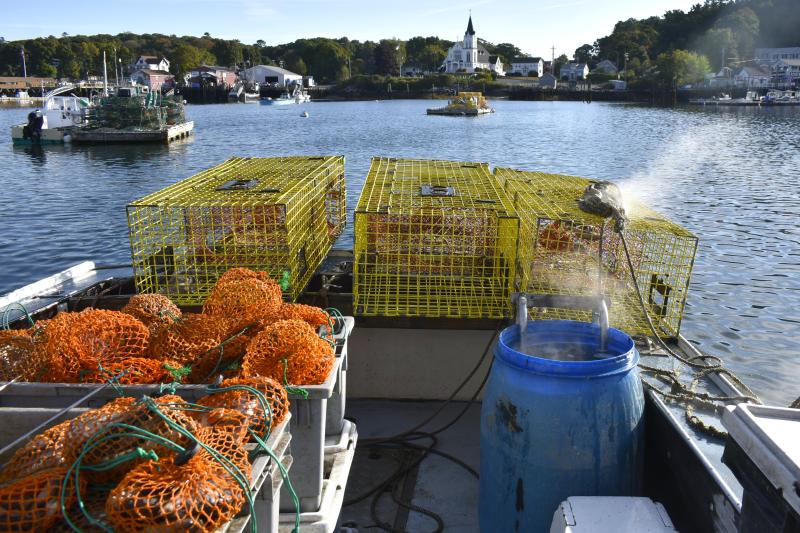Tariffs muddy waters for Maine's lobster industry
The week of March 31 saw a tumultuous turn of events as the Trump administration launched sweeping tariffs on trading partners across the world, many who have responded in turn. So far, Maine’s lobster industry has escaped the brunt of the conflict. However, concern lingers.
“At the end of the day lobster is an indulgence, a luxury item, and people are only willing to pay for something like that when they have the confidence in the economy,” said Luke Holden, CEO of Luke's Lobster. “A lot of this uncertainty is driving a lack of consumer confidence, which ultimately could impact the lobster industry as well.”
Holden spoke during an April 3 webinar hosted by Island Institute about tariffs, the lobster industry and the future of U.S. trade.
According to Eric Miller, president of Rideau Potomac Strategy Group, the Trump administration’s tariff policies have changed the way international commerce has worked for 40 years. “It is a dramatic, profound reshaping of commerce,” he said.
Miller said the model for low-cost trade and long-distance shipping is going away. While he said it leads to more localized industry, it also means “higher cost for consumers on most everything they buy.”
Although Miller said recent tariffs and retaliations could have spillover impacts through the lobster industry's connected industries like transportation, he said they don't directly apply to Maine lobster if using the 2020 United States-Mexico-Canada Agreement. However, relations with Canada have been tense, and Miller said Maine's lobster industry isn’t out of the woods.
Maine State Economist Amanda Rector said trade with Canada accounted for 70% of all imports and 40% of all exports, a relationship that tops $7.5 billion a year.
According to Rector, in 2024, Maine exported over $250 million worth of fish and other marine goods to Canada, which receives around 75% of Maine’s comparable exports; likewise, Maine imported over $150 million worth of such goods. “There is very much a fluid relationship on trade back and forth across the Canadian border,” she said.
Holden echoed the point and said about half of the 90 million pounds of lobsters his company harvests gets processed across the border, where they purchase some as well. He added, 75% of what gets processed in Canada then gets sold in the U.S. “The lobster industry itself is completely comingled,” he said about Maine's relationship to Canada.
If conflicts escalate, one of the biggest questions remains, who pays? Holden said a hypothetical 10% tariff on $100 of lobster means his company would pay $110. They could try to negotiate the cost down, absorb it, or pass the burden to the consumer.
While many industries can raise their prices, the approach may not work for lobster. “A customer that already thought the world was too expensive before this happened now is, ultimately, a little more timid and cautious with how they are spending," he said. "It doesn't create a ripe environment to just pass cost on.”
Miller also said the lobster industry has high volumes and low profits and would have a hard time eating tariff costs. He recalled a tour with a processor who said their profits are in the leg meat. In addition, Canada isn't the U.S.'s only lobster trade partner. Miller said China put a 10% tariff on U.S. lobster exports. He also expects exports to Europe to be affected.
Unpredictability around lobster reflects a broader economic climate: According to Rector, uncertainty in trade policies contributes to a generally unsettled economic environment as consumers pull back spending. “That uncertainty can really harm the overall economy,” she said.
However, Holden remained positive and said the lobster industry has survived worse. “It's made up of stakeholders that are incredibly resilient, from processors to fishermen. Everybody has figured it out in the past,” he said. "We will catch the product, we will produce it, we will sell it. It's just all the noise around it that will be a distraction.”


































